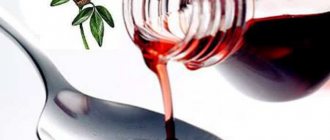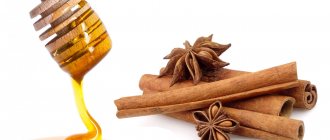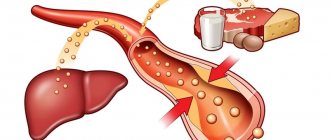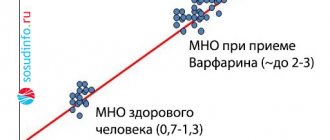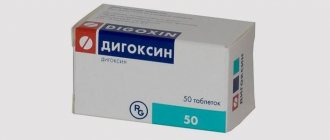Clover is a unique plant that has received recognition in folk and evidence-based medicine and is widespread in central Russia, Ukraine and Belarus.
Due to the content of vitamins, macro- and microelements, red meadow clover has a beneficial effect on the respiratory, cardiovascular, immune, circulatory and other systems of the body.
The most common deviation in which the consumption of flowers and leaves of this plant is indicated is an increased level of total cholesterol in the blood.
In one study, the isoflavones found in red clover actually demonstrated the ability to reduce “bad” LDL cholesterol by an average of 9.5%.
Is it true that the plant lowers cholesterol?
At the turn of the 20th and 21st centuries, a large randomized study was conducted that proved that when taking clover for 12 months, there was a decrease in total cholesterol and triacylglycerides compared to the control group.
An increase in “useful” high-density lipoproteins by 25% was also recorded (not every drug from the statin group can boast of such achievements).
Thus, clover has a beneficial effect on the lipid profile, helps prevent atherosclerosis and really helps lower “bad” cholesterol. Phytoestrogens contained in the extract of this flower were even included in the list of recommended medications for metabolic syndrome.
However, when assessing the significance of scientific work, several important factors should be taken into account:
- the study included only women with severe symptoms of menopausal syndrome;
- the effect is similar to the influence of female sex hormones (estrone, estradiol);
- No other group of scientists could achieve similar results (there were many attempts).
Expert commentary
Kardash Anton Borisovich
Therapist, cardiologist. Doctor of the highest category.
Thus, although clover's cholesterol-lowering effectiveness has been partially supported by research, the plant is recommended for use only as an adjuvant treatment for lipid imbalances. In the absence of signs of metabolic syndrome and atherosclerosis, this plant can be used only to prevent vascular complications in the future.
Clover for cholesterol
Medicines based on clover are used to dissolve cholesterol plaques , break down cholesterol compounds and remove them from the body. They strengthen blood vessels, make them more elastic, and restore their structure. The benefits of clover are not only in the removal of cholesterol, but also in the ability to completely restore the damaged vascular system.
Red clover raw materials are rich in special compounds – isoflavonoids. They make vascular and capillary walls more resilient, and also affect the elasticity of large arteries. In addition, this plant improves the condition of people suffering from angina pectoris.
Other medicinal properties
Clover has many other medicinal properties, which are realized due to the huge amount of useful substances it contains:
- glycosides (trifolin and isotrifolin);
- tannins;
- essential and fatty oils;
- vitamins (B1, B2, C, E, K);
- organic acids;
- salicylic acid;
- carotene;
- trifolyrizine (has an antimicrobial effect, specific for most gram-positive bacteria and protozoa);
- ascorbic acid;
- tocopherol.
The main beneficial properties for the cardiovascular system are as follows:
- Reduced blood clotting. The blood thinning effect is achieved due to acetylsalicylic acid and vitamins that make up meadow clover. As a result, excessive platelet coagulation and the risk of decreased tissue oxygenation are suppressed.
- Prevents the formation of blood clots. Clover strengthens blood vessels and helps normalize the structure of cell membranes of endothelial cells. The inner lining of blood vessels becomes resistant not only to lipids, but also to sugars and autoimmune complexes. People who regularly use this raw material in their diet are less likely to suffer from diseases such as varicose veins of the lower extremities and thrombophlebitis.
- Increased blood sugar utilization. Isoflavonoids promote increased sensitivity of insulin receptors mainly in muscle tissue. As a result, the main source of energy is better spent, and the body receives more energy. It is important to note that this ensures the prevention of type II diabetes mellitus.
- Reduced swelling. The plant significantly accelerates glomerular filtration. This helps remove excess fluid from the body and reduce the severity of edema against the background of heart failure stage II and higher.
See 7 more beneficial properties of clover for blood vessels here →
The plant can also influence other systems of the body, in particular:
- reduces intracranial pressure and the degree of optic disc atrophy in this condition;
- suppresses the synthesis of antibodies to the body's own cells (with rheumatoid arthritis, Crohn's disease, thyroiditis, scleroderma);
- improves microcirculation in hemorrhoids, reduces the frequency of exacerbations;
- dilates the bronchi and improves the general condition of bronchial asthma, obstructive bronchitis and COPD;
- relieves dyspeptic symptoms (nausea, heartburn);
- increases appetite;
- has a detoxifying effect (due to direct binding to toxins and increasing diuresis);
- accelerates the regeneration of damaged tissues (bruises, cuts, abrasions);
- increases the body's resistance to viral and bacterial agents, as well as protozoa;
- promotes liquefaction and removal of mucus.
Benefits of clover for cholesterol
Exceeding the permissible level of cholesterol in the blood threatens functional disruptions in the body and the appearance of diseases of the cardiovascular system. The most common violations include:
- blood clot formation;
- atherosclerosis;
- oxygen starvation at the cellular level;
- increased blood pressure.
You can reduce bad cholesterol with medication or with the help of traditional medicine. The most effective remedy is considered to be an infusion or decoction of meadow clover. The composition of the active components has the following effects:
- normalizes lipid metabolism by breaking down lipoprotein compounds and removing them from the body;
- prevents the sedimentation of fats on the walls of blood vessels and the subsequent formation of fatty plaques;
- removes toxins and other harmful compounds from the blood;
- strengthens the immune system and protective functions of the body;
- replenishes the lack of hormones and restores metabolic processes;
- increases the firmness and elasticity of blood vessels;
- allows you to do without third-party medications in the early stages of the disease.
The high effectiveness of meadow clover against cholesterol is due to the abundance of vitamins, coumaric and salicylic acids, antioxidants, essential oils, tannins and steroids of plant origin.
At more complex stages of the disease, it is recommended to use complex therapy, which includes:
- diet;
- regular physical activity;
- maintaining a healthy lifestyle (excluding alcohol and tobacco products);
- taking statin drugs, vitamin complexes with a high content of omega-3;
- traditional medicine.
We recommend that you familiarize yourself with Photos of daisies.
Untimely treatment of the disease threatens the development of heart pathologies, myocardial infarction, stroke, and thrombosis. The course of medication is prescribed exclusively by the attending physician. Before using herbal infusions, you should also consult a specialist.
Indications for use
Folk remedies and medications made from clover are indicated for the following conditions:
- Hypertonic disease. Red clover increases the tone and elasticity of the vascular wall and prevents the fibrotic transformation of arteries against the background of this disease, and by reducing the number of atherogenic lipids, it reduces the risk of developing myocardial infarction and stroke several times. The use is also justified for symptomatic arterial hypertension, with the exception of nephrogenic ones.
- Inflammatory diseases of the upper respiratory tract. Mucolytic, bronchodilation and antiseptic effects contribute to the rapid removal of sputum, easier breathing and the destruction of bacterial flora. Recovery comes faster.
- Mastopathy and other dishormonal diseases. It has been scientifically proven that the plant extract helps normalize hormonal levels and prevent malignant transformations of benign proliferating cells.
- Mechanical damage and infectious and inflammatory diseases of the skin. Meadow clover increases tissue regeneration and reduces microbial contamination in the wound.
- Gastritis, duodenitis, pancreatitis, cholecystitis in remission.
- Atherosclerosis.
- Venous insufficiency with the formation of edema syndrome.
- Poisoning with poisons, bacterial toxins and degradation products of one’s own cells in case of functional failure of the kidneys, liver and lungs.
- Peripheral angiopathy that developed during the course of diabetes mellitus, hypertension and obliterating thrombophlebitis of the lower extremities.
- Tuberculosis of any localization.
- Systemic allergic reactions.
- Autoimmune vasculitis.
- Menstrual dysfunction such as algomenorrhea and dysmenorrhea.
- Menopausal syndrome.
Before starting treatment, it is recommended to consult with a specialist, as there is a significant list of contraindications. This will avoid a lot of adverse effects.
Methods of administration
Unlike other herbs, meadow clover does not have a pronounced taste, which allows you to experiment with medicinal recipes and forms of taking the medicinal plant. For example, flour is prepared from dried inflorescences and leaves, which is then used to bake pancakes, cookies, pancakes and other baked goods. Dried raw materials are also used as a seasoning for main courses and side dishes.
Fresh leaves are used to make salads, soups, fresh juices and green smoothies. The inflorescences are good for creating alcohol tinctures. Dried plants are brewed, infused, and added to herbal teas.
Also, vitamin complexes, food additives and dietary supplements are developed based on clover, which can be purchased at the pharmacy.
Contraindications
You should not use clover and preparations made on its basis if:
- Increased individual sensitivity to the components of the composition (from the group of allergic reactions, urticaria is the most common).
- Hormone-dependent tumors. As already mentioned, the action of the drug is similar to female sex hormones, as a result, malignant cells begin to multiply more actively and spread throughout the body.
- Peptic ulcer of the stomach and duodenum (increases the risk of bleeding).
- Any acute inflammatory diseases of the gastrointestinal tract or chronic in the acute stage.
Expert commentary
Kardash Anton Borisovich
Therapist, cardiologist. Doctor of the highest category.
Long-term use of herbal remedies based on clover is not recommended, as it can accumulate in the body and have a large list of undesirable effects (from increased sensitization to the formation of ulcers on the mucous membrane of the stomach, duodenum and small intestine).
Before starting treatment, you should consult a specialist. Any therapy must be justified, and the action must be applicable in a specific clinical situation.
What are the benefits of red clover for the body?
In addition to all the main medicinal properties, meadow clover increases the activity of the immune system.
This plant is very often used in traditional medicine to treat many ailments, but the most valuable thing about this plant is its ability to reduce cholesterol in the blood and dissolve subcutaneous fat, which is effectively used for losing extra pounds in obesity.
The reduction of cholesterol by meadow clover is a good indicator of the healing properties of the plant, because an increase in lipids in the blood is very dangerous.
If a person does not monitor his cholesterol level, then the following disorders begin to occur in the body:
- The blood pressure index rises and does not decrease from high levels;
- The risk of blood clots and the formation of thrombosis pathology increases;
- Tissue cells experience oxygen deficiency, and organ hypoxia occurs.
For this reason, the patient needs to reconsider his lifestyle and his diet.
Include more physical activity on the body and more activity, which will help improve metabolism, as well as say goodbye to bad habits - alcoholism and smoking, which were among the main factors in the accumulation of cholesterol.
In addition to changing your lifestyle, it is necessary to review your diet and exclude cholesterol-containing foods from it and introduce more vegetables and fresh fruits into your diet.
Nutrition should be rational and cholesterol-free.
If you don't monitor your cholesterol levels, your blood pressure rises
How to take it correctly - 3 recipes
Long-term experience of using clover in folk medicine has made it possible to identify a huge list of recipes. Below are the most effective ones:
Tincture
To prepare clover tincture with vodka, you will need:
- 500 ml vodka;
- 500 g of flowers.
Prepare like this:
- All components are placed in a glass liter container and mixed thoroughly.
- The mixture is covered with a lid and infused for 2 weeks. The tincture should be stored in a cool place protected from children and sunlight.
- Every 2-3 days you need to shake the container to increase the activity of the interaction of plant materials with ethanol.
It should be taken according to this scheme: 1 tbsp. l. 1 time per day for the first 3 days. Then 2 tbsp. l. 2 times a day.
The maximum duration of therapy should not exceed 30 days. Afterwards you can take a break for 2-3 weeks and repeat the course of treatment.
Tea
To brew anti-cholesterol tea, you need to take equal parts of meadow clover and meadowsweet grass (2 tsp each). The ingredients are poured into 200 ml of hot water (temperature is about 85 degrees) and infused for 5-10 minutes.
Tea should be drunk 1-2 glasses per day, regardless of meals.
Decoction
- 10 heads of fresh clover need to be filled with 250 ml of water.
- The resulting solution should be brought to a boil and cooked for about 10-15 minutes.
- The decoction needs time to brew (1-2 hours).
Drink 100 ml infusion 3 times a day for 3 weeks. Excellent for atherosclerosis and diabetes.
Contraindications and precautions
It has practically no contraindications. It is not recommended for pregnant women and people with poor blood clotting (thinning), as well as those who have an individual intolerance to the medicinal plant. The medicine should be stopped if side effects occur, such as: rash on the skin, nausea, and in women, vaginal bleeding is possible. Any symptoms that appear should be reported to your doctor immediately. Also, the medicinal plant cannot be combined with drugs such as:
- Estrogen-containing products.
- Contraceptives.
- Medicines that slow down blood clotting.
- With Tamoxifen, a drug that is used in the treatment of cancer.
According to reviews from doctors and numerous patients, drugs that contain clover are very good for cholesterol, help the liver produce good cholesterol and suppress the synthesis of bad cholesterol. But traditional medicine is good when combined with therapy prescribed by a doctor based on the patient’s tests. Under no circumstances should you self-medicate.
Traditional medicine using red meadow clover does not give positive results immediately, but only after completing a long course (from a couple of months). It is also important to maintain proper nutrition, exclude fatty foods, smoked foods, and sweets from your diet.
Review of pharmaceutical drugs and its basis (table)
On the modern pharmaceutical market you can find many pharmaceutical preparations, medicines and biologically active food additives based on clover, which have all the properties of a natural product, but they are several times more pronounced.
| Drug name | Compound | Main indications | Average cost per package |
| Balm “Tales of Altai” for the heart | Clover, hawthorn, lemon balm, oregano, natural honey, motherwort, lemon juice. |
| 280-300 rubles. |
| Femiwell menopause | Magnesium, clover, tartar, stearic acid, calcium stearate, motherwort grass, L-theanine, Griffonia simplefolia. |
| About 1200 rubles. |
| Evalar BIO tea | Clover leaves, birch leaves; herb and cassia aquifolia. |
| 85-95 rubles. |
| Atheroclephitis | Clover leaves and flowers, hawthorn flowers, vitamin C, nicotinic acid. |
| 350-390 rubles. |
| Cleverol | Dry red clover extract |
| About 500 rubles. |
What kind of plant is this?
Red meadow clover appears in early summer and can be harvested until late autumn.
It grows almost everywhere - the easiest way to find it is in meadows and forest edges. If you have the opportunity, prepare more raw materials for the winter: clover is an excellent helper in the fight against colds, heart disease, and strengthens the body well. In winter, teas from this plant will come in very handy - you can add a little of it to regular green or black tea. Field clover belongs to the legume family. Once upon a time it was used purely as food for domestic animals; the healing properties of the plant were discovered later. Now the scope of its application has expanded significantly: red clover is used for dyeing fabrics, heads, previously dried, are added to soups, leaves and stems are an excellent seasoning for salads. The leaves are also added to dough when making bread, and used as tea. In addition, bees collect excellent honey from the flowers of this plant.
All parts of clover are useful: flowers, leaves, stems. They contain large quantities of carotene, ascorbic acid and other vitamins, fatty acids and resins. Clover's properties are known to ease breathing, fight asthma and asthmatic conditions, debilitating cough, and tuberculosis. It is also used to improve digestion, to treat hepatitis, stomach diseases, cholecystitis, and to cleanse the liver of toxins.
Clover is also good for treating blood vessels. With its help you can reduce intracranial pressure, reduce blood clotting, and relieve headaches. It is used for women's ailments, pain of a rheumatic nature, diabetes, hemorrhoids, and blood diseases. There is information that clover is used as a preventative against tumors of the breast, lymphatic system, and ovaries.
Thus, clover has the following medicinal properties:
- painkillers;
- expectorants;
- diuretics;
- anti-inflammatory;
- wound healing.
Application in various industries
Clover is widely used not only in folk medicine, but also in culinary arts, cosmetology and beekeeping. It has become widely used in everyday life in countries such as Russia and the CIS, China, Thailand, and India.
Cooking
Due to its unique taste characteristics and the content of a large number of vitamins and microelements, the herbaceous plant is used to prepare a large number of dishes.
Cookie
You need to take the following components:
- 400 g of premium wheat flour;
- 100 g ground almonds;
- 1 tbsp. l. baking powder;
- 70-80 g melted butter;
- 2 medium-sized chicken eggs;
- 100 g natural yogurt;
- 1-2 g vanillin;
- 1 cup dried or crushed fresh flowers.
It is necessary to mix flour, baking powder and butter until smooth. Separately, beat eggs with yogurt and vanilla. Add the grass flowers to the egg mixture and slowly mix all the ingredients.
Roll out the dough on a flat surface previously sprinkled with flour. Cut out any shapes and bake at 200 degrees until golden brown.
Mousse
For dessert you need to take:
- 1 tbsp. l. gelatin;
- 400 ml fresh flowers;
- 100 ml orange juice;
- 200 ml water;
- 4 tbsp. l. honey;
- a pinch of salt.
Gelatin should be dissolved in 50 ml of liquid. Then combine all ingredients and bring to a boil. Remove from heat, stir and let cool completely and set in the refrigerator. The dish can be decorated with nuts, honey or whipped cream.
Cosmetology
Modern cosmetics containing an extract and extract of this product have a rejuvenating effect: it prevents the formation of wrinkles, increases the activity of metabolic processes and increases the rejection of dead cells.
Creams are used for hypersensitive skin and acne.
Honey farming
Clover flowers are extremely productive honey plants.
Fresh honey has a pleasant, delicate aroma and a transparent consistency.
This plant is grown separately in apiaries, as it improves the cultural properties of soils, increases the number of earthworms and representatives of beneficial flora.
The use of meadow clover in nutrition against cholesterol
You can prepare a dressing from the green parts of meadow clover for soups and borscht:
- To prepare the dressing, take meadow clover leaves, calendula herb and chicory plant;
- Dry all the ingredients of the dish and finely chop;
- Sift all crushed ingredients through a sieve and mix into a homogeneous mixture;
- The ready-made dry dressing for first courses is ready and is added to the food a couple of minutes before it is fully cooked.
This dressing serves as a medicinal additive in dietary nutrition and will help not only reduce the calorie content of the first dish, but also give it taste and aroma.
Useful properties of clover
In folk medicine and homeopathy, all parts of the plant are used, however, the flowers of red clover are the most valuable. They are most often used:
- as a wound-healing agent - for abscesses, boils, ulcers, eczema, burns;
- as a diuretic – for cystitis, pyelonephritis and other diseases of the genitourinary system;
- as a painkiller - for inflammation of the joints, migraines, neuralgia;
- as an expectorant - for bronchitis, pneumonia, tuberculosis;
- as an astringent – for intestinal disorders.
Clover inflorescences are used for asthma, malaria, hypertension and atherosclerosis. A decoction of them is drunk as a general tonic after prolonged illness, loss of appetite, or depression.
Fresh trefoil leaves have regenerative properties. They are applied to wounds, burns and other skin lesions. Juice squeezed from the stems and leaves is used to wash the eyes for conjunctivitis and other eye diseases.
